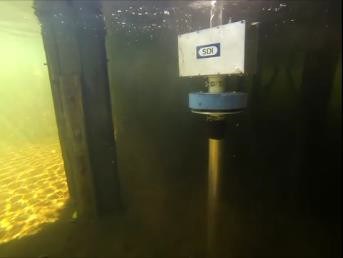
NPS Photo
In order to evaluate whether part of the Anhinga Trail site still remained intact after the 1968 dredging project, SEAC archeologist Dr. Margo Schwadron conducted a survey of a large area around the site. Because the site is located underwater, traditional archeological methods could not be used.
Schwadron and her crew used a device called a vibracore to take samples from the bottom of the slough. A vibracore works by using a small engine to create vibrations that push a hollow tube down into the sediments. Once the hollow tube was brought to the surface, archeologists poured the materials out of the tube and into a screen. Then, archeologists removed artifacts and animal remains to be studied at the laboratory.
Thirty vibracore samples were taken during the survey. Archeologists produced a short video about the archeological site and the vibracore survey. The survey revealed that the site was destroyed by the dredging that occurred in the area in the 1960s.
Studying the Archeological Site
-
 Reflectance Transformation Imaging
Reflectance Transformation ImagingReflectance transformation imaging is a way of photographing an object under different angles and then manipulating the images.
-
 Computed Tomography
Computed TomographyComputed Tomography (CT) scans are used to help archeologists to examine the bone tools.
-
 Zooarcheology
ZooarcheologyZooarcheologists study animal bones, teeth, shells, horn, and other animal parts.
-
 Archaeobotany
ArchaeobotanyArchaeobotany is the study of plant remains from archeological sites.
Last updated: July 16, 2024
